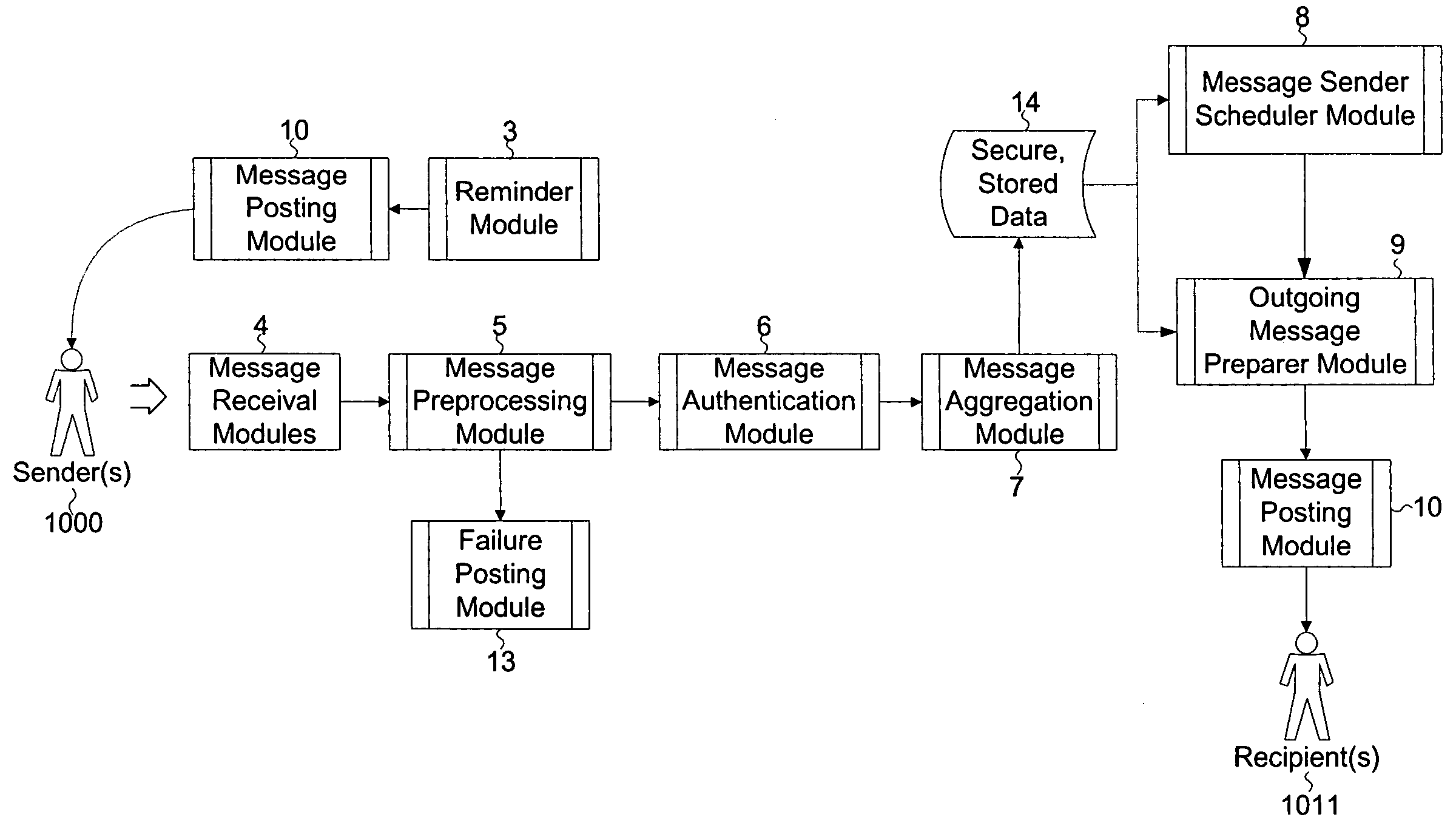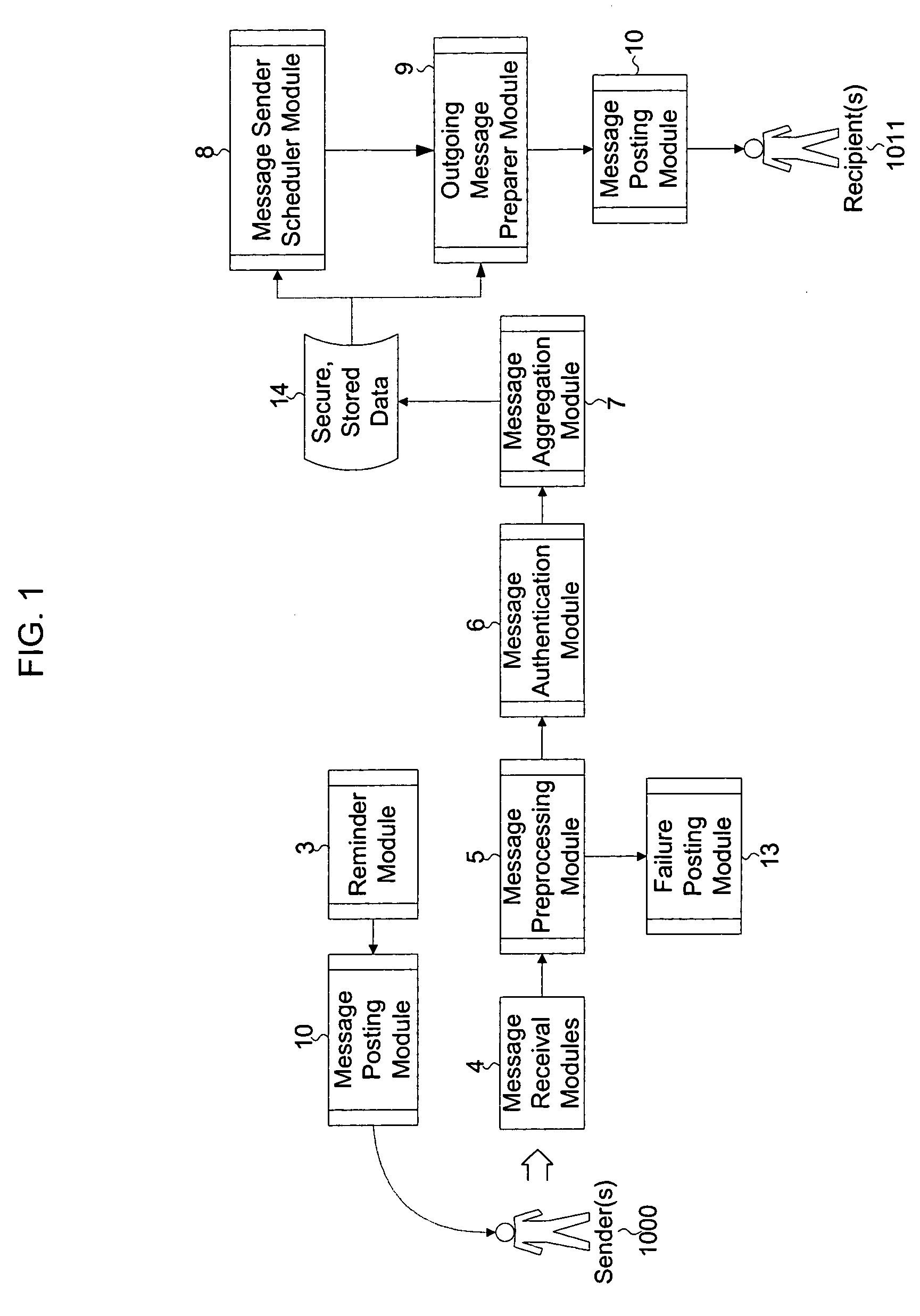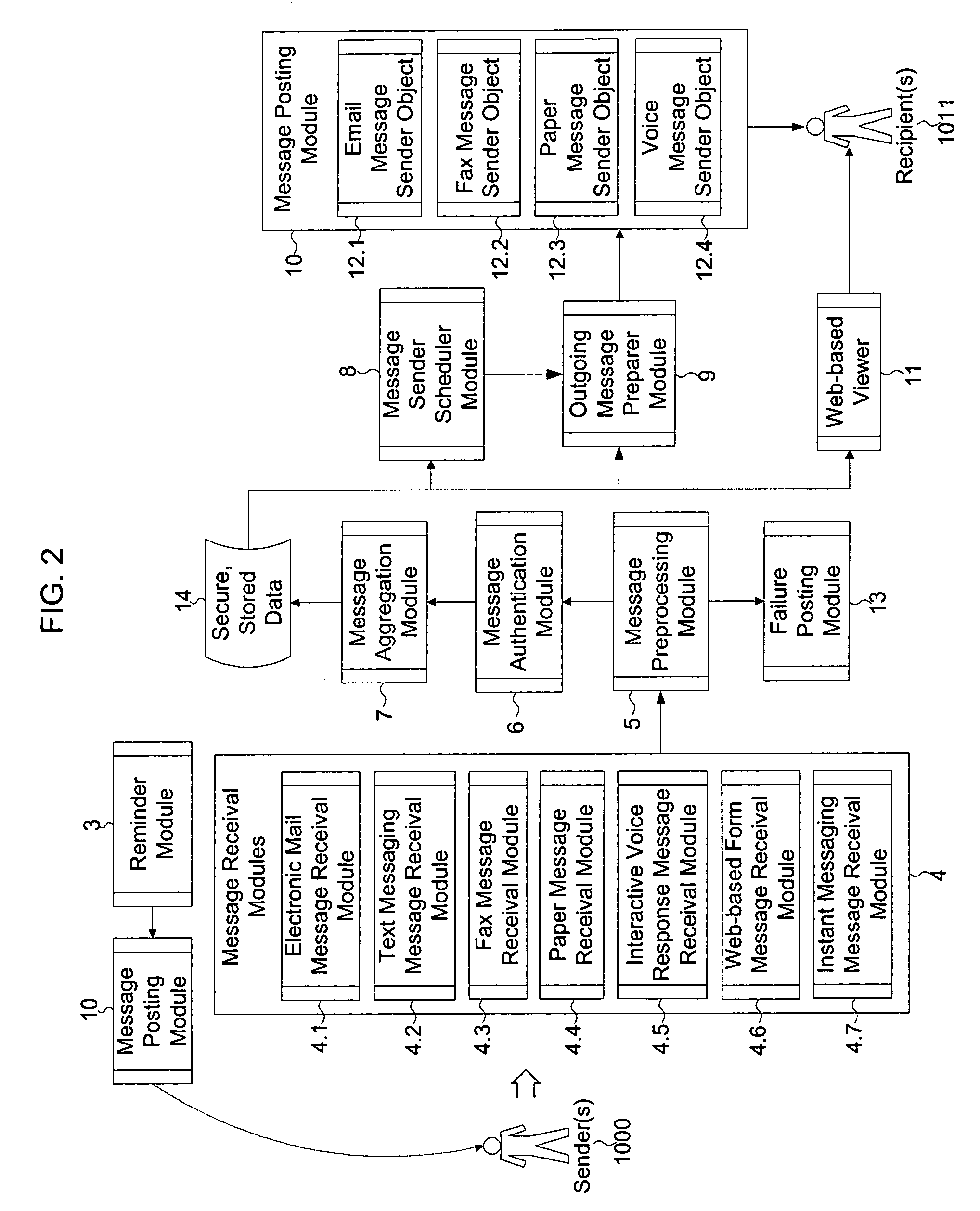Method and system for communication from anonymous sender(s) to known recipient(s) for feedback applications
a technology of anonymous sender and known recipient, applied in the field of information communication and information processing systems, can solve the problems of disassembly or sensitive position of feedback, many would-be feedback senders also do not have the sophistication to undertake steps, and the feedback is awkward or sensitive,
- Summary
- Abstract
- Description
- Claims
- Application Information
AI Technical Summary
Problems solved by technology
Method used
Image
Examples
Embodiment Construction
[0087] The present invention is described using the context of one sender, such as an employee, sending an anonymous feedback message to one recipient, such as a manager. However, the present invention is useful in many applications where one or more senders wish to provide anonymous messages to one or more known recipients. Accordingly, the invention is not to be limited to the particular context or embodiments described herein. The term recipient group is used to denote a list, collection, or catalog that contains one or more recipients. Consequently, sending a message to a recipient group implies the transmission of that message to all individual recipients that are part or member of the recipient group.
[0088]FIG. 1 illustrates the high-level process flow of the invention. The processes performed by the invention are for the most part performed by a computer software program running on a computer system. The computer requires an operating system providing a file system structure...
PUM
 Login to View More
Login to View More Abstract
Description
Claims
Application Information
 Login to View More
Login to View More - R&D
- Intellectual Property
- Life Sciences
- Materials
- Tech Scout
- Unparalleled Data Quality
- Higher Quality Content
- 60% Fewer Hallucinations
Browse by: Latest US Patents, China's latest patents, Technical Efficacy Thesaurus, Application Domain, Technology Topic, Popular Technical Reports.
© 2025 PatSnap. All rights reserved.Legal|Privacy policy|Modern Slavery Act Transparency Statement|Sitemap|About US| Contact US: help@patsnap.com



